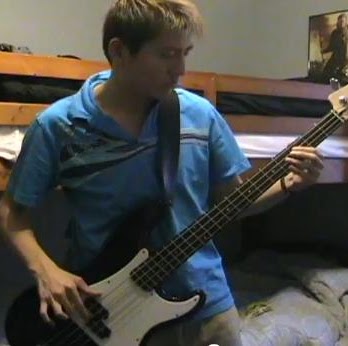Chen Zhang
age ~61
from Kent, WA
Chen Zhang Phones & Addresses
- Kent, WA
Education
-
School / High School:University of California Berkeley School of Law
Ranks
-
Licence:New York - Currently registered
-
Date:2007
Medicine Doctors

Chen Zhang
view sourceSpecialties:
Pathology
Clinical Pathology
Clinical Pathology
Us Patents
-
Front-End Circuitry For Multiband Frequency Management
view source -
US Patent:20180123770, May 3, 2018
-
Filed:Dec 7, 2017
-
Appl. No.:15/834739
-
Inventors:- Redmond WA, US
Chen Zhang - Sammamish WA, US -
International Classification:H04L 5/14
H04B 7/04
H04B 1/00 -
Abstract:The described technology provides front-end antenna architecture for wireless communication that manages multiple frequency sub-bands in a manner that results is a low insertion loss rate. Further, the components of the architecture are smaller than typical wireless communication antenna architectures, and therefore the described architecture can be accommodated in a smaller area than typical architectures without a decrease in efficiency. A matching circuit is communicatively connected to each frequency sub-band's respective signal path. When two or more sub-bands are requested for high-speed wireless communication, the matching circuits match the impedance of each sub-band with one-another. Matching the impedance allows two or more sub-bands to be used to wirelessly communicate while maintaining high efficiency. The matching circuits are disabled when only one sub-band is needed for wireless communication.
-
Antenna Interface For Transmission Line Trace
view source -
US Patent:20170207534, Jul 20, 2017
-
Filed:Jan 19, 2016
-
Appl. No.:15/001008
-
Inventors:- Redmond WA, US
Chen Zhang - Sammamish WA, US -
International Classification:H01Q 5/335
-
Abstract:The described technology provides an antenna interface for wireless communication that allows the use of a single transmission line trace between at least one antenna and a transceiver of a wireless communications device. The components of the antenna interface include a first set of filters, a set of low noise amplifiers (LNAs) and a second set of filters. The antenna interface, which is communicatively coupled to the single transmission line trace, avoids the use of a coaxial cable and reduces issues related to the use of multiple transmission line traces.
-
Front-End Circuitry For Multiband Frequency Management
view source -
US Patent:20170093552, Mar 30, 2017
-
Filed:Sep 30, 2015
-
Appl. No.:14/871219
-
Inventors:- Redmond WA, US
Chen Zhang - Sammamish WA, US -
International Classification:H04L 5/14
H04B 7/04 -
Abstract:The described technology provides front-end antenna architecture for wireless communication that manages multiple frequency sub-bands in a manner that results is a low insertion loss rate. Further, the components of the architecture are smaller than typical wireless communication antenna architectures, and therefore the described architecture can be accommodated in a smaller area than typical architectures without a decrease in efficiency. A matching circuit is communicatively connected to each frequency sub-band's respective signal path. When two or more sub-bands are requested for high-speed wireless communication, the matching circuits match the impedance of each sub-band with one-another. Matching the impedance allows two or more sub-bands to be used to wirelessly communicate while maintaining high efficiency. The matching circuits are disabled when only one sub-band is needed for wireless communication.
License Records
Chen Zhang
License #:
065034803 - Active
Issued Date:
Jun 12, 2008
Expiration Date:
Sep 30, 2018
Type:
Licensed Certified Public Accountant
License #:
239018374 - Expired
Issued Date:
Mar 24, 2008
Expiration Date:
Sep 30, 2009
Type:
Registered Certified Public Accountant
Chen Zhang
License #:
06108 - Active
Category:
Accountants
Issued Date:
Jul 13, 2012
Expiration Date:
Jun 30, 2019
Type:
Certified Public Accountant
Chen Zhang
License #:
06108 - Active
Category:
Accountants
Issued Date:
Jul 13, 2012
Expiration Date:
Jun 30, 2019
Type:
Certified Public Accountant
Name / Title
Company / Classification
Phones & Addresses
DRAGON HOUSE DELAWARE INC
MANDY'S GIFT BOUTIQUE, INC
HONG KONG BUFFET SPRINGFIELD, INC
Lawyers & Attorneys

Chen Zhang - Lawyer
view sourceAddress:
(212)8939787 (Office)
Licenses:
New York - Currently registered 2007
Education:
University of California Berkeley School of Law

Chen Zhang - Lawyer
view sourceOffice:
Latham & Watkins LLP
Specialties:
Securities Offerings
Mergers & Acquisitions
Business
Securities Offerings
Mergers & Acquisitions
Business
Securities Offerings
ISLN:
1000736078
Admitted:
2015
Law School:
University of Texas School of Law, Doctor of Jurisprudence/Juris Doctor (J.D.), 2015
Classmates

Chen Zhang
view sourceSchools:
Egg Harbor Township High School Egg Harbor Township NJ 1999-2003
Community:
Christine Rose

Chen Zhang
view sourceSchools:
University of Miami Miami FL 2005-2009
Community:
William Green, Ernest Rowlette, Kathleen Sochor

Chen Zhang
view sourceSchools:
University of Miami Miami FL 2003-2007
Community:
William Green, Ernest Rowlette, Kathleen Sochor

Chen Zhang
view sourceSchools:
Turner Technical High School Miami FL 1994-1998
Community:
Elalie Regis, Chester Mckinney, Brittany Crawford

University of Miami, Miam...
view sourceGraduates:
Jeremy Jones (2000-2004),
Chen Zhang (2005-2009),
Frank Rullan (1968-1972),
Alejandro Perez (2000-2004)
Chen Zhang (2005-2009),
Frank Rullan (1968-1972),
Alejandro Perez (2000-2004)

John Taylor Collegiate Hi...
view sourceGraduates:
Laurie Ritchie (1989-1993),
Harold Pochert (1978-1982),
Stacy Ewart (1987-1991),
Angela Chen Zhang (2005-2009)
Harold Pochert (1978-1982),
Stacy Ewart (1987-1991),
Angela Chen Zhang (2005-2009)

Turner Technical High Sch...
view sourceGraduates:
Emron Manning (1992-1996),
Stafford Barton (2001-2005),
Anabel Cordero (2005-2009),
Lacrecia Curry (1994-1998),
Chen Zhang (1994-1998)
Stafford Barton (2001-2005),
Anabel Cordero (2005-2009),
Lacrecia Curry (1994-1998),
Chen Zhang (1994-1998)

Hackett Elementary School...
view sourceGraduates:
Catherine Smith (1965-1969),
Zhang Chen (2000-2004),
Ashley Holloway (1992-1996),
Merrinda Harrod (2002-2007),
Heather Taylor (1997-2001)
Zhang Chen (2000-2004),
Ashley Holloway (1992-1996),
Merrinda Harrod (2002-2007),
Heather Taylor (1997-2001)
Plaxo

chen zhang
view sourceResearch Engineer at University of Vermont Past: Transportation Engineer at Urbitran Associates, Inc.

Chen Zhang
view sourceParsons Brinckerhoff

Chen Zhang
view sourceMcKinsey & Company

Chen Zhang
view sourcemonte sereno, ca
Youtube
Googleplus

Chen Zhang
Work:
Two Sigma Investments - Quantitative Soft Developer (2010)
Education:
Michigan State University - Computer Science, Tsinghua University - Computer Science

Chen Zhang
Work:
EdgeTech of EdgeOne LLC - Embedded Software Engineer (2012-2013)
Education:
University of Florida - Electrical Engineering, Beijing Institute of Technology - Electrical Engineering

Chen Zhang
Education:
Purdue University - Economics, Wuhan University - Economics

Chen Zhang
Education:
Michigan state university, Michigan state University

Chen Zhang
Education:
Carnegie Mellon University - Mechanical Engineering

Chen Zhang
Education:
Southeast University

Chen Zhang

Chen Zhang
Education:
Pennsylvania State University - Aerospace Engineering
Myspace
Flickr

Chen Hao Zhang
view source
Chen Bin Zhang
view source
Chen Xuan Zhang
view source
Chen Zhang
view source
Chen Zhang
view source
Chen Zhang
view source
Chen Zhang
view source
Chen Bin Zhang
view sourceGet Report for Chen Zhang from Kent, WA, age ~61
















